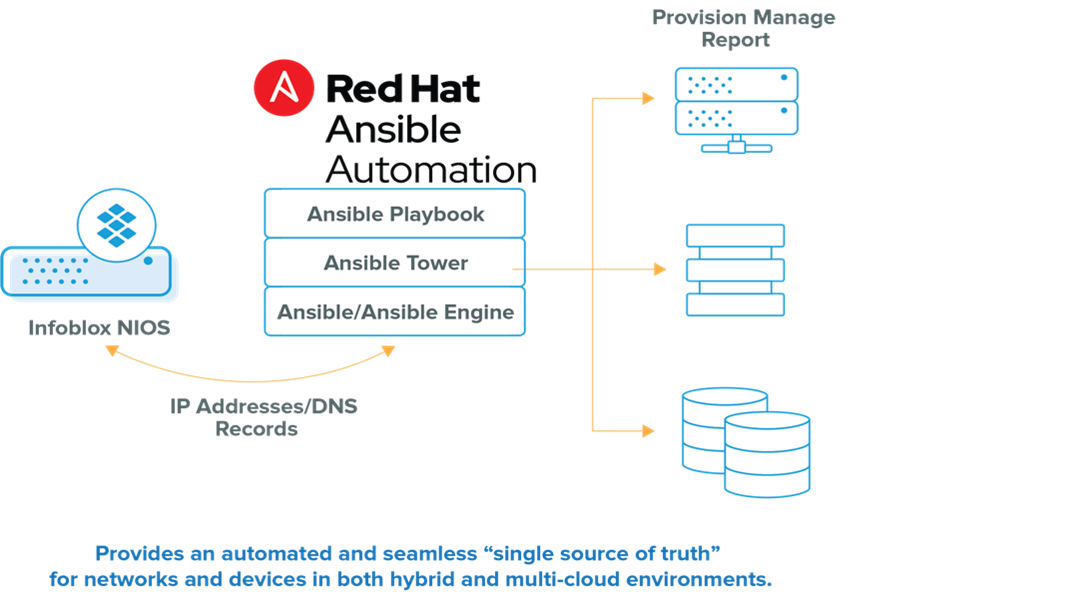Are you attending AnsibleFest 2020? I am. And suppose you are a communications service provider (CSP) looking to build a secure, elastic, automated, high-performance network in the run-up to 5G and multi-access edge computing. There, we hope you can connect with our team of experts virtually at AnsibleFest 2020 via the Open Lounge.
Here’s why. Communications service provider (CSP) networks are well underway in their journey towards telco clouds, leveraging software-defined infrastructure built on standard cloud-based building blocks of compute, storage, and networking. These telco clouds will power 5G and edge-based workloads – driving new capital and operational models while enabling new services and improved overall service delivery economics. 5G networks will be the first real end-to-end network built using these principles, virtualizing the network core and extending virtualization from centralized data centers to the radio access network. These new networks will require a transformation of the entire end-to-end architecture, from the radio access network (RAN) to Operational Support Systems (OSS).
To deliver, realize, and maximize investments in 5G and edge deployments, CSPs must quickly and dramatically evolve their existing legacy DNS, DHCP, and IP Address Management (DDI) processes. CSPs often leverage traditional IPAM and DNS management processes using spreadsheets and databases to enable deployment of cloud functions or track device inventory limits. This means IT and server admins have to manage significantly more VMs and containers—sometimes hundreds and perhaps thousands at a time—in their virtual and cloud environments. The dynamic nature of these VMs, which get provisioned and destroyed several times a day, requires an agile network infrastructure. Manual processes are error-prone, labor-intensive, and non-scalable, which forces IT administrators to perform non-value-add activities instead of focusing on higher-value value business initiatives. These legacy approaches will not work in the 5G environment and may delay critical deployments and dilute the automation and orchestration benefits that telco clouds promise to bring.
CSPs deploying 5G and Multi-Access Edge (MEC) infrastructure with Red Hat platform solutions can leverage automation to alleviate the burden and limitations of maintaining a static register of services, operators, and applications. A combined Red Hat/Infoblox solution addresses these critical problems in an automated and highly efficient way. Dynamic Inventory is one of the powerful features in Red Hat Ansible Tower, which allows Ansible to Query external systems and use the response data to construct its Inventory.
For example, Infoblox provides built-in, well documented, and supported IPAM dynamic inventory and Zero Touch Provisioning capabilities with Ansible Tower that eliminates the need for customized external scripting and provides full lifecycle automation functions within the Ansible ecosystem. Infoblox and Red Hat have co-authored and individually posted excellent documents explaining these solutions.

Here are seven great examples of how Infoblox and the Red Hat Ansible Automation Platform can work together to enable CSPs to maximize investments by automating core network services.
- Infoblox DDI Integration with Red Hat Ansible. Beginning with the Ansible 2.5 open source project release, Ansible added support for the Infoblox NIOS Virtual Appliance—enabling organizations to leverage existing networking Ansible playbooks to utilize existing Infoblox infrastructure for IP address management for tracking, Inventory, DNS automation, and more. This demonstration video reviews Infoblox DDI integration with Ansible and what has been introduced with the more recent release of Ansible 2.8.
- Next Level Automation. For organizations moving toward hybrid and multi-clouds, the complexity of managing essential network services such as DNS, DHCP, and IP Address Management (DDI) can prevent them from realizing the full promise of the cloud. In this video, Infoblox DDI integration with Red Hat Ansible provides an automated and seamless “single source of truth” for networks and devices in both hybrid and multi-cloud environments.
- Infoblox IP Address Management using Red Hat Ansible Tower. Designed for the network professional, the following technical video guides the user through the steps involved in using Red Hat’s Ansible Tower to automate the process of IP Address Management. This is also a bridge to OpenShift as it requires configuration of DNS namespace domain and resource record entry for bootstrapping purposes.
- Infoblox DDI Auto-scale VNF using Ansible. Using the Infoblox NIOS Virtual Appliance (vNIOS) auto-scaling through Ansible, customers can dynamically add vNIOS members on the fly when high DNS queries and low cache hit ratios are encountered. This demonstration will cover how the vNIOS can auto-scale based on user-defined DNS queries per second and cache hit ratio using Ansible on OpenStack.
- Zero Touch Provisioning of Infoblox DDI on OpenStack using Ansible. Infoblox integration with the Red Hat Ansible Automation Platform automates the complete deployment process and streamlines the grid provisioning process. Zero-touch provisioning (ZTP) of vNIOS on OpenStack using Ansible 2.8+ enables infrastructure teams to deploy Infoblox VNF’s on private cloud infrastructures like VMware Center or OpenStack with no manual intervention. This reduces the deployment time and automates the initial configuration, like setting up licenses, IP addresses, and starting the services.
- Infoblox IPAM Plugin for Red Hat OpenStack Platform. Infoblox provides a DNS, DHCP, and IPAM (DDI) containerized plugin adapter for the Red Hat OpenStack Platform, enabling a customizable, centralized, and granular view of all IPAM, DNS, and DHCP data. Gain a single-point comprehensive perspective of the entire OpenStack network combined with network security and control, thus allowing seamless management of multiple networks and resources within OpenStack.
- Team up to reduce risk with Infoblox and Red Hat Ansible Automation Platform. Facing thousands of alerts daily, today’s security teams are burdened with multiple security tools and manual processes which require a defensive, automated cybersecurity approach to overcome the challenges. Infoblox recently presented a BrightTALK webinar where we demonstrated how the Infoblox Ecosystem Exchange and Red Hat Ansible Tower roles and playbooks automate and integrate different security solutions creating a solution that is “more than the total of its parts.”
With Infoblox and Ansible, organizations can confidently handle the most challenging DDI requirements in every type of network, data center, and hybrid cloud environment. We hope to see you next week!











